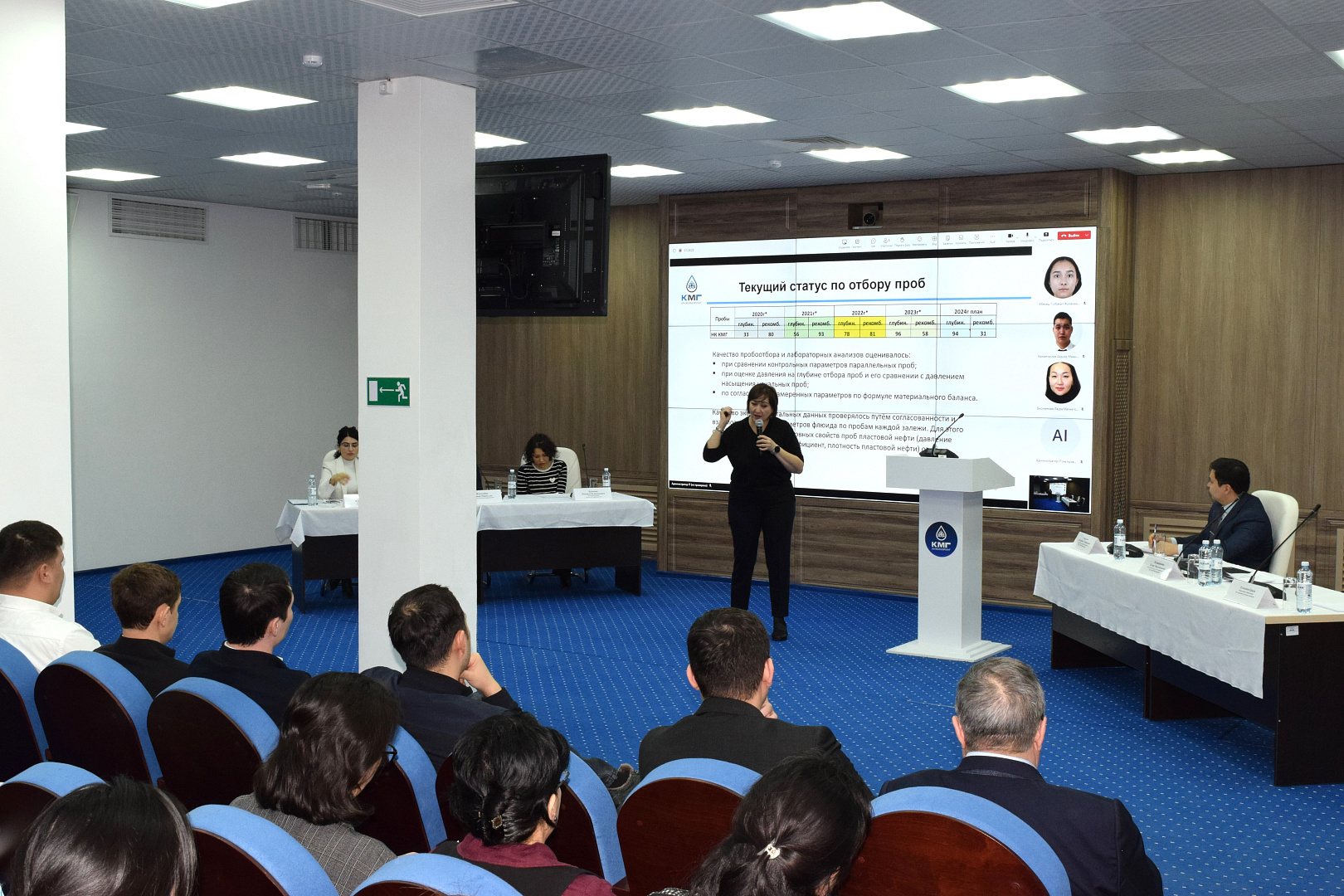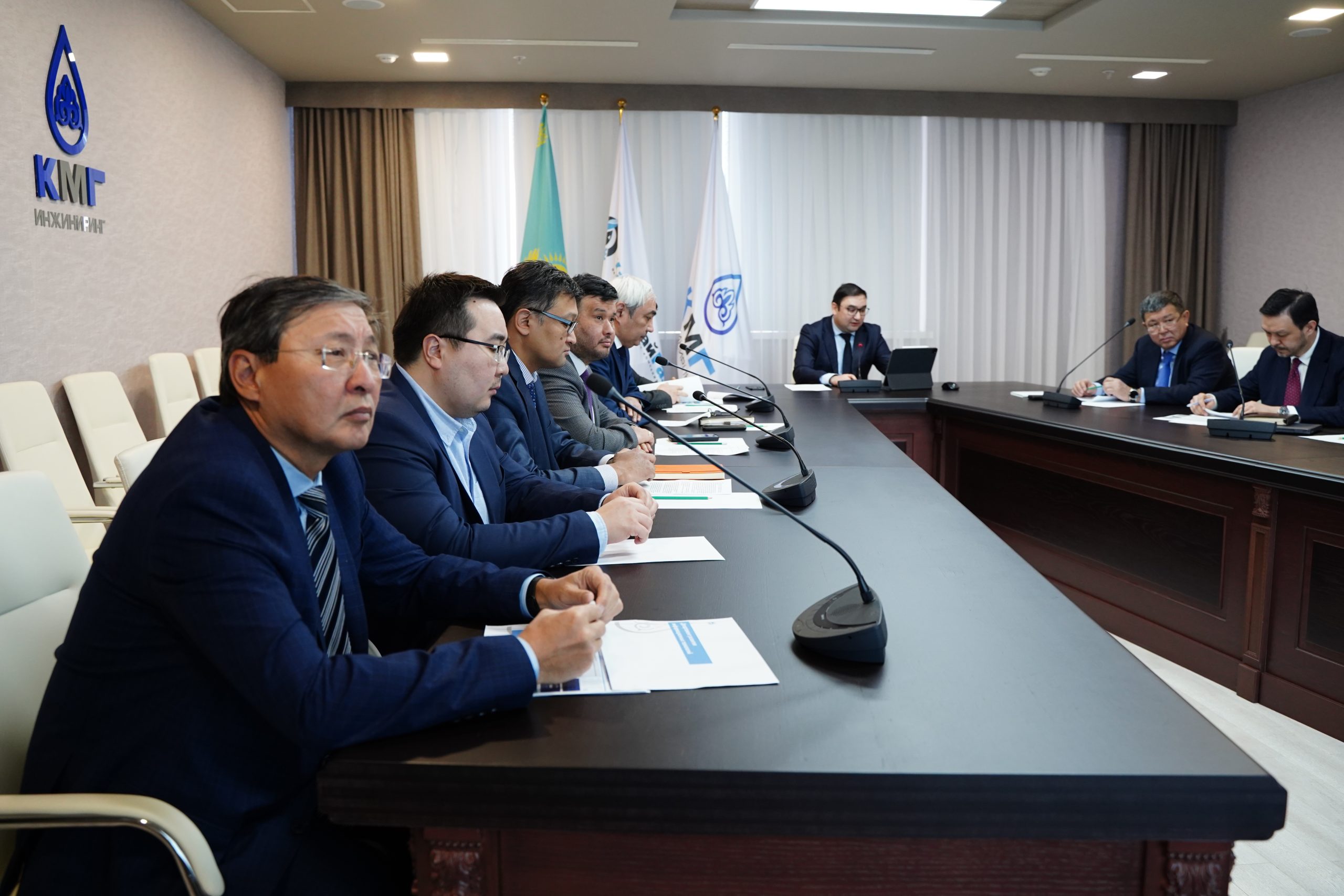What is the most effective way to maximize efficiency when drilling wells?
- 07.11.2022
- News-Eng
- Comments Off on What is the most effective way to maximize efficiency when drilling wells?
- sdauren
KMG Engineering organized a meeting of Intellectual Club participants to discuss the efficiency of drilling horizontal wells in the fields of Mangistaumunaigas JSC.
Berik Aidarov, Lead Geologist of MMG Department of Geology and Field Development, shared introductory information, providing an overview of the company’s operating fields. The geologist provided current statistics on the volume and structure of oil reserves, analyzed well depletion in the Kalamkas, Zhetybai, Asar, Alatyube, Bekturly, Northern Akkar, Atambay-Sartyube fields, and provided data on the current oil recovery factor, remaining recoverable reserves, and other related estimated parameters.
Afterwards, the speaker focused in detail on the degree of field depletion and efficiency of drilling horizontal wells:
“The average distance between wells at MMG JSC’s brownfields is 150-200 m. A big part of the wells is drilled to the lower horizons. Because of the infrastructure and compacted grid, the extraction of residual reserves requires the use of horizontal side-tracking measures given the radius of the drilled zone, as the development of localized zones of residual recoverable reserves is not possible. Production drilling should be aimed at bringing new zones into development rather than densifying the existing grid,” the expert recommended to the audience.
Since the beginning of development, i.e., in 2012, approximately 147 horizontal branch wells have been drilled at the Mangistamunaigas fields. Drilling technology has had a positive impact on the volume of black gold produced during this time period. The total additional production, for example, is 2,870.2 thousand tons. Horizontal well success rates in ZhMG Production Directorate fields average 70%, with the Kalamkas field at 60%.
However, the “factor of unsuccessful and decreasing production rates,” as mentioned by the MMG representative in his presentation, must also be considered. He cited the following as the primary causes of low production rates: unfavorable well zone selection, low reservoir properties; drilling of wells in low permeability zones; and oil saturation; drilling in depleted zones; high gouging of wellbore zones; increased water cut and lack of preliminary geological analysis of section heterogeneity based on models and quality geological support in the process of reservoir drilling. All of this together significantly complicates the work of oil workers during the operation of the fields. Wells are currently more than 80% water-cut, and the type of completion does not permit isolation work or increased production life.
“The type of well completion does not allow for well interventions, flow interval evaluation, or flow interval intensification, which has a negative impact on the technical and economic indicators of the application of hydrocarbon reservoir development technologies,” said B. Aidarov.
Concluding his speech, the speaker emphasized the importance of creating a database of measurements of inclinometry of the HW and the surrounding wells in the Kalamkas and Zhetybai fields.
“An analysis of the impact of drilling horizontal wells on previously drilled neighboring wells must be performed. It is also necessary to analyze the risk of collision with neighboring, previously drilled wells when designing such wells, followed by a review of the history and results of logging. When designing, it is necessary to use LWD (GRL, NNL, resistivity, etc.) on low-water horizon geosteering with the possibility of a pilot borehole in mind. Furthermore, the issue of updating inclinometry data in geological models of the Kalamkas and Zhetybai deposits is long overdue. Another factor to consider is the presence of highly qualified specialists alongside the online drilling,” said the speaker.
The presentation raised great interest among the audience, they asked the speaker a number of questions on the topic discussed.
For reference: The Intellectual Club was launched in 2020 with the support of KazMunayGas NC JSC. This club held 17 meetings with the participation of employees of KazMunayGas NC JSC and its subsidiaries and affiliates: Ozenmunaigas JSC, Embamunaigas JSC, Karazhanbasmunai JSC, Kazgermunai JV LLP, Mangistaumunaigas JSC, Kazakhturkmunay LLP, Kazakhoil Aktobe LLP, Urikhtau Operating LLP, as well as KMG Engineering LLP.





